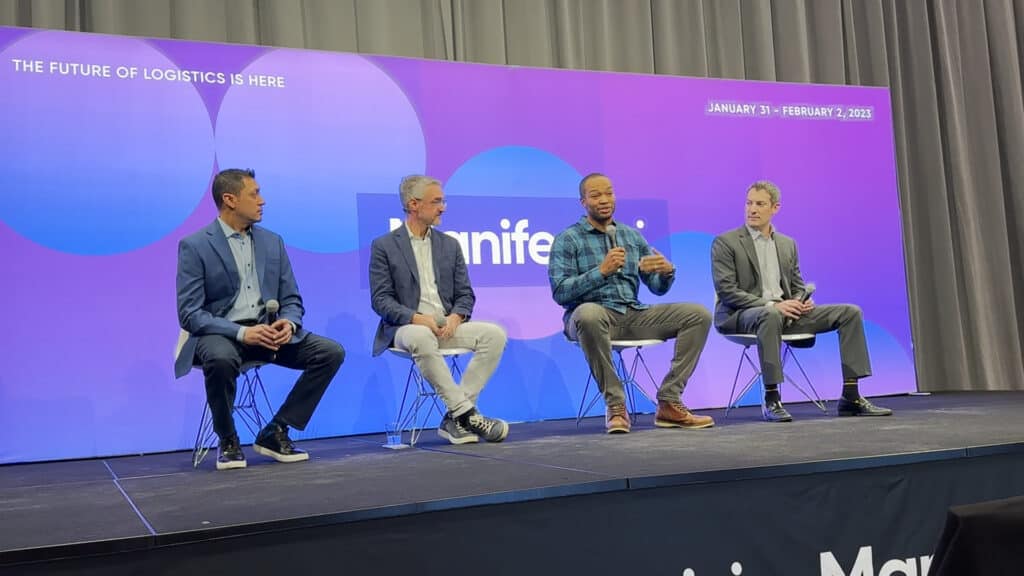Imagine this scenario: In an email, a manager gives a team lead a goal for their team. The team lead then offers directions to the team on how to achieve that goal during an in-person meeting. The team keeps notes from the meeting to reference while executing the project. As the team is working, the manager needs status reports, so the team members periodically report to the team lead on their efforts via a chat app. The team lead then aggregates those messages and reports back to the manager during their weekly phone call. Notice how these communications are all made using different methods, and are managed and stored in different places.l. To help the team perform and achieve the goal more quickly, it would help to digitize those communications, collect them in one place, and make them available to everyone when they need them.
In the same way, data must be digitized, aggregated, and openly shared to enable technologies to work seamlessly together. And, nowhere is that free flow of data more important than in last-mile operations. Between spreadsheets, databases, and physical files scattered across desks and offices, it’s quite common for the data behind last-mile delivery fleets to be spread across several repositories, leading to siloed data and wasted time manually transferring information from system to system. The key is data integration.
Data integration is the process of combining data from multiple sources so you or your apps can properly use it. Depending on where and how you store your data, there are a few ways to go about integration, which is what today’s post will cover:
- The definition of flat files and APIs
- The difference between the two
- How and why to integrate each type for better last-mile performance
Flat file integration
What’s a flat file?
A flat file is a plain-text database made up of columns and rows, such as a spreadsheet or CSV file. They were invented by IBM in the ‘70s, and even through the emergence of modern technology, they remain one of the most widely used ways to organize basic information. Fleet managers often use flat files to organize information pertinent to route planning and last-mile delivery, including stop location, customer data, delivery time windows, driver information, and more.
Flat file integration
Flat-file integration is the process of transferring sets of data from flat-file sources, such as spreadsheets, into a system. While there are people who say that spreadsheets are a solution of the past,, sometimes spreadsheets are the best tools for the job. The truth is that the right dispatching software will be able to work with your delivery operations’ data in the way that works for you.
Uploading and integrating your flat files into the Wise Systems delivery automation platform lets you:
- More easily visualize routes during route planning
- Stand up new depots more quickly with batch driver-uploads
- Quickly import high-volumes of stops
- Import formulas unique to your business to calculate the cost of routes
Once you import your files, the platform will tackle the tough stuff, such as route optimization, cost calculations, performance tracking, stop sequencing, and more.
API integration
What’s an API?
API stands for Application Program Interface, which serves as a way for multiple software programs to communicate with each other securely over the internet. From weather apps to payment apps, online travel booking to social media, an API is used to transfer data between apps and websites you use everyday.
API Integration
API integration is very similar to flat-file integration in the way that it combines data from different sources, but the difference lies in the way this is done. Picture a server at a restaurant. You request an order, and they take that request to the kitchen. The kitchen prepares the order, then gives it to the server, who brings it to your table. APIs take your data requests to an application, which performs a function and adds value, then returns something of value – based on your data – to you.
Instead of uploading spreadsheets to a delivery automation system, APIs provide a real-time data feed so you can:
- Get visibility into route execution
- Give drivers package information when scanning barcodes
- Enable a dynamic or hybrid routing strategy
- Integrate with your systems of record, including:
- Order management system (OMS), which automatically shares order information needed to build route plans.
- Warehouse management system (WMS), which receives route information (once planned) in order to pick merchandise and pack vehicles for each stop on the route.
- Employee management system (EMS), which provides driver hours and availability and ensures routes aren’t automatically assigned to drivers who have the day off.
- Enterprise resource planning (ERP) system, which can send invoices to customers automatically as soon as the delivery is made, accelerating the order-to-cash process.
Your last-mile delivery software solution
The Wise Systems delivery automation platform works seamlessly across the last-mile ecosystem thanks to a growing number of integrations. Integrations streamline your operations to improve your team’s efficiency and visibility and ensure more perfect deliveries.
At Wise Systems, we realize that route optimization solutions should be tailored to you and how you do your business, not the other way around. Whether you find yourself using flat files, APIs, or a healthy mix of both, seamlessly integrate your data and optimize your routes with the Wise Systems delivery automation platform.
Schedule your free demo and start integrating today.





